
The Australian Army is the principal land warfare force of Australia, a part of the Australian Defence Force (ADF) along with the Royal Australian Navy and the Royal Australian Air Force. The Army is commanded by the Chief of Army (CA), who is subordinate to the Chief of the Defence Force (CDF) who commands the ADF. The CA is also directly responsible to the Minister for Defence, with the Department of Defence administering the ADF and the Army.

The 1st Commonwealth Division was the military unit that commanded Commonwealth land forces in the Korean War. The division was a part of the multinational British Commonwealth Forces Korea, with infantry units of the British Army, Canadian Army and Australian Army forming the bulk of the division. Additionally, the New Zealand Army supplied artillery contingents and an Indian medical unit was also attached. As with the "Korean Augmentation To the United States Army" (KATUSA) programme, numerous South Korean troops were seconded to the Commonwealth division to make up numbers under a scheme known as "KATCOM".

The Battle of the Imjin River, also known as the Battle of Solma-ri or Battle of Gloster Hill in South Korea, or as Battle of Xuemali in China, took place 22–25 April 1951 during the Korean War. Troops from the Chinese People's Volunteer Army (PVA) attacked United Nations Command (UN) positions on the lower Imjin River in an attempt to achieve a breakthrough and recapture the South Korean capital Seoul. The attack was part of the Chinese Spring Offensive, the aim of which was to regain the initiative on the battlefield after a series of successful UN counter-offensives in January–March 1951 had allowed UN forces to establish themselves beyond the 38th Parallel at the Kansas Line.

The Indian Army during British rule, also referred to as the British Indian Army, was the main military force of the British Indian Empire until 1947. It was responsible for the defence of both British India and the princely states, which could also have their own armies. As quoted in the Imperial Gazetteer of India, "The British Government has undertaken to protect the dominions of the Native princes from invasion and even from rebellion within: its army is organized for the defence not merely of British India, but of all possessions under the suzerainty of the King-Emperor." The Indian Army was an important part of the forces of the British Empire, in India and abroad, particularly during the First World War and the Second World War.
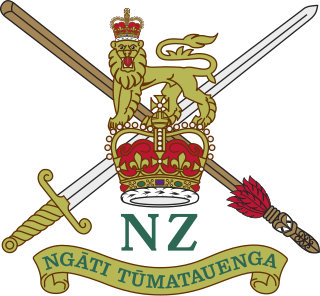
The New Zealand Army is the principal land warfare force of New Zealand, a component of the New Zealand Defence Force alongside the Royal New Zealand Navy and the Royal New Zealand Air Force.
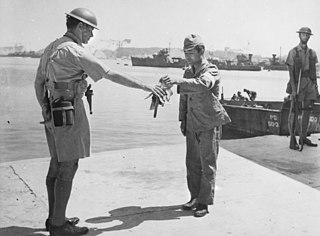
The British Commonwealth Occupation Force (BCOF) was the British Commonwealth taskforce consisting of Australian, British, Indian and New Zealand military forces in occupied Japan, from 1946 until the end of occupation in 1952.

British Commonwealth Forces Korea (BCFK) was the formal name of the British Commonwealth army, naval and air units serving with the United Nations (UN) in the Korean War. BCFK included Australian, British, Canadian, Indian, and New Zealand units. Some Commonwealth units and personnel served with United States and/or other UN formations, which were not part of BCFK.
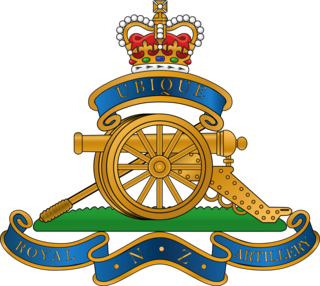
The Royal Regiment of New Zealand Artillery is the artillery regiment of the New Zealand Army. It is effectively a military administrative corps, and can comprise multiple component regiments. This nomenclature stems from its heritage as an offshoot of the British Army's Royal Artillery. In its current form it was founded in 1947 with the amalgamation of the regular and volunteer corps of artillery in New Zealand. In 1958 in recognition of services rendered it was given the title the Royal Regiment of New Zealand Artillery.
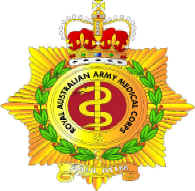
The Royal Australian Army Medical Corps (RAAMC) is the branch of the Australian Army responsible for providing medical care to Army personnel. The AAMC was formed in 1902 through the amalgamation of medical units of the various Australian colonies and was first deployed to South Africa as a small detachment of personnel supporting the Australian Commonwealth Horse during the Second Boer War. The corps has participated in every Australian Army operation since then, including wars and peacekeeping operations. The "Royal" prefix was granted in 1948.

The Third Battle of the Hook was a battle of the Korean War that took place between a United Nations Command (UN) force, consisting mostly of British troops, supported on their flanks by American and Turkish units against a predominantly Chinese force.
The history of the Australian Army is the culmination of the Australian Army's predecessors and its 120-year modern history. The Army has its origins in the British Army and colonial military forces of the Australian colonies that were formed prior to the Federation of Australia. These were gradually united into federal units between 1899 and 1903; thus forming the beginning of the Australian Army. The colonial forces were combined and formed the basis of the new army, when the Commonwealth of Australia was founded on 1 January 1901. The modern history of the Army began with its founding at the start of the 20th century as the colonial armies were officially united as the Commonwealth Military Forces. In 1916 the title 'Australian Military Forces' was adopted and remained its official name until 1980, after which it became known as the Australian Army.
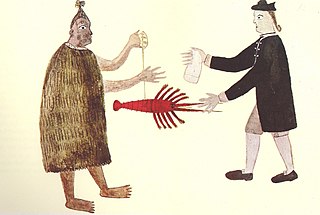
The military history of New Zealand is an aspect of the history of New Zealand that spans several hundred years. When first settled by Māori almost a millennium ago, there was much land and resources, but war began to break out as the country's carrying capacity was approached. Initially being fought with close-range weapons of wood and stone, this continued on and off until Europeans arrived, bringing with them new weapons such as muskets. Colonisation by Britain led to the New Zealand Wars in the 19th century in which settler and imperial troops and their Māori allies fought against other Māori and a handful of Pākehā. In the first half of the 20th century, New Zealanders of all races fought alongside Britain in the Boer War and both World Wars. In the second half of the century and into this century the New Zealand Defence Force has provided token assistance to the United States in several conflicts. New Zealand has also contributed troops extensively to multilateral peacekeeping operations.

Korean Augmentation to the United States Army is a branch of the Republic of Korea Army that consists of Korean enlisted personnel who are seconded to the Eighth United States Army (EUSA). KATUSA does not form an individual military unit. Instead, small numbers of KATUSA members are assigned to positions in most of the departments of the Eighth United States Army, filling in for United States Army enlisted soldiers and junior non-commissioned officers. KATUSAs are selected from a pool of qualified volunteers who are subject to mandatory military service for male Korean citizens.
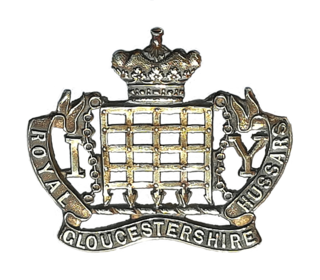
The Royal Gloucestershire Hussars was a volunteer yeomanry regiment which, in the 20th century, became part of the British Army Reserve. It traced its origins to the First or Cheltenham Troop of Gloucestershire Gentleman and Yeomanry raised in 1795, although a break in the lineage means that its formation is dated to the Marshfield and Dodington Troop raised in 1830. Six further troops – officered by nobility and gentry, and recruited largely from among landholders and tenant farmers – were subsequently raised in Gloucestershire, and in 1834 they came together to form the Gloucestershire Yeomanry Cavalry. In 1847, the regiment adopted a hussar uniform and the name Royal Gloucestershire Hussars. Originally intended to counter insurrection and a French invasion that never materialised, the yeomanry's first deployments were ceremonial and as mounted police during times of civil unrest. Three Gloucestershire troops were deployed to Bristol on two separate occasions in the 1830s in support of the civil authorities.

Australia entered the Korean War on 28 September, 1950; following the invasion of South Korea by North Korea. The war's origins began after Japan's defeat in World War II, which heralded the end to 35 years of Japanese occupation of the Korean Peninsula. The surrender of Japan to the Allied forces on 2 September 1945, led to the division of Korea into two countries, which were officially called the Democratic People's Republic of Korea (DPRK) and the Republic of Korea (ROK), with the DPRK being occupied by the Soviet Union, and the ROK, below the 38th Parallel, being occupied by the United States (US).

The military history of Australia during the Boer War is complex, and includes a period of history in which the six formerly autonomous British Australian colonies federated to become the Commonwealth of Australia. At the outbreak of the Second Boer War, each of these separate colonies maintained their own, independent military forces, but by the cessation of hostilities, these six armies had come under a centralised command to form the Australian Army.

The Volunteer Corps for Korea was a Belgium–Luxembourg military force sent to assist South Korea during the Korean War. A battalion-sized unit, it arrived in Korea in 1951 and remained after the cease-fire until 1955. Over the course of its existence, 3,171 Belgians and 78 Luxembourgers served in the unit.

The British yeomanry during the First World War were part of the British Army reserve Territorial Force. Initially, in 1914, there were fifty-seven regiments and fourteen mounted brigades. Soon after the declaration of war, second and third line regiments were formed. However, the third line regiments were soon absorbed into the Cavalry Reserve Regiments, to supply replacements for the cavalry and yeomanry. Other horsed regiments in the British Army, during the war, were the regular cavalry regiments and the three regiments belonging to the special reserve: the North Irish Horse, the South Irish Horse and the King Edward's Horse. The senior yeomanry regiments could trace their origins back over 100 years; the oldest regiment, the Royal Wiltshire Yeomanry, had been formed in 1794. The most junior regiment, the Welsh Horse, had only been formed on 18 August 1914, after the start of the war.

The Second Battle of the Hook was fought between 18 and 19 November 1952 during the Korean War between elements of United Nations Command (UN) troops consisting of British and Canadian troops of the 1st Commonwealth Division and Chinese forces on a vital sector known as the "Hook" position which was the scene of much bitter fighting before and in the ensuing months. Attacking Chinese forces attempted to take the strategic position but were repelled by a combination of heavy firepower and effective counterattacks.

Elements of the Second Australian Imperial Force (AIF) were located in the United Kingdom (UK) throughout World War II. For most of the war, these comprised only a small number of liaison officers. However, between June and December 1940 around 8,000 Australian soldiers organised into two infantry brigades and supporting units were stationed in the country. Several small engineer units were also sent to the UK, and up to 600 forestry troops were active there between July 1940 and mid-1943. A prisoner of war (POW) repatriation unit arrived in the UK in August 1944, and over 5,600 released AIF prisoners eventually passed through the country. Following the war, small numbers of Australian soldiers formed part of a military cricket team which toured England, and the Army contributed most members of the Australian contingent to the June 1946 victory parade in London.



















